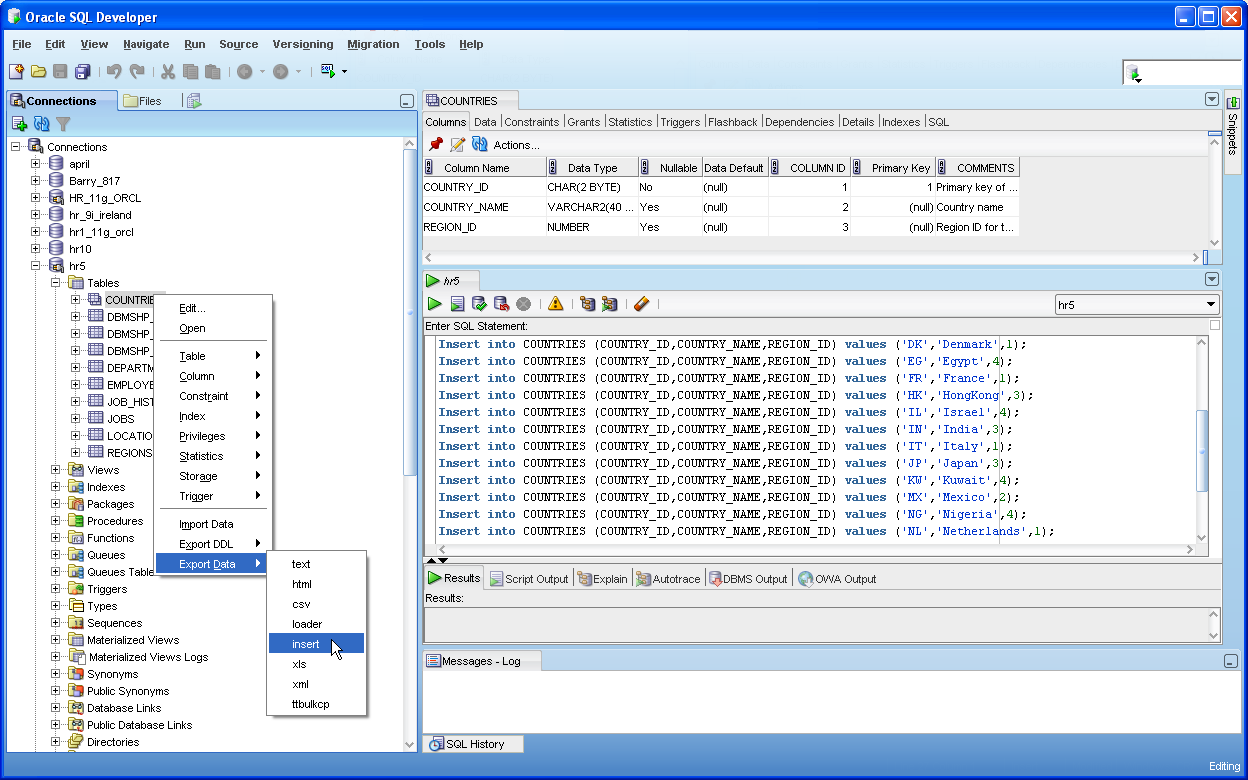
- DATA DUMP OF MYSQL FROM RDP SERVER HOW TO
- DATA DUMP OF MYSQL FROM RDP SERVER INSTALL
- DATA DUMP OF MYSQL FROM RDP SERVER PASSWORD
- DATA DUMP OF MYSQL FROM RDP SERVER FREE
- DATA DUMP OF MYSQL FROM RDP SERVER WINDOWS
Generate the format file that describes the schema for the table by issuing the following command from the command line of the machine where bcp is installed.īcp dbname.tablename format nul -c -x -f exportformatfilename.xml -S servername\sqlinstance -T -t \t -r \n

DATA DUMP OF MYSQL FROM RDP SERVER HOW TO
Here is an example of how to do that using the Create Database and Create Table commands: CREATE DATABASE
DATA DUMP OF MYSQL FROM RDP SERVER WINDOWS
You can move the flat files containing data to the machine where SQL Server is installed using various file copying tools such as AZCopy, Azure Storage Explorer or windows copy/paste via Remote Desktop Protocol (RDP).Įnsure that the database and the tables are created on the target SQL Server database.

While it is not required, having files containing source data located on the same machine as the target SQL Server allows for faster transfers (network speed vs local disk IO speed). It works across all three SQL Server variants (On-premises SQL Server, SQL Azure, and SQL Server VM on Azure).
DATA DUMP OF MYSQL FROM RDP SERVER INSTALL
For instructions, see How to install and configure Azure PowerShell.

Installed and configured Azure PowerShell locally.For instructions, see Set up an Azure virtual machine for SQL Server as an IPython Notebook server for advanced analytics. Provisioned SQL Server on an Azure VM.After you have created the storage account, you will need to obtain the account key used to access the storage. If you don't have an Azure storage account, see the Create a storage account article. You will use an Azure storage account for storing the data in this tutorial.
DATA DUMP OF MYSQL FROM RDP SERVER FREE
If you do not have a subscription, you can sign up for a free trial. For more information, see Copy data with Azure Data Factory (Copy Activity). This document assumes that SQL commands are executed from SQL Server Management Studio or Visual Studio Database Explorer.Īs an alternative, you can use Azure Data Factory to create and schedule a pipeline that will move data to a SQL Server VM on Azure. Deploy a SQL Server Database to a Microsoft Azure VM wizard Graphical Built-in Utilities in SQL Serverġ. The following table summarizes the options for moving data to SQL Server on an Azure virtual machine. These tasks for moving data to the cloud are part of the Team Data Science Process.įor a topic that outlines the options for moving data to an Azure SQL Database for Machine Learning, see Move data to an Azure SQL Database for Azure Machine Learning. Your dump file will be in the directory, the path to which you have specified.This article outlines the options for moving data either from flat files (CSV or TSV formats) or from an on-premises SQL Server to SQL Server on an Azure virtual machine. The export process can take several minutes, depending on the size of exported data. Specify the path to the directory, in which you want to export the dump.Ģ. Open the server instance you have created earlier in your desktop client and pick Data Export and select database objects to export. Select test, click on example and you’ll see your imported dump.ġ. Using the credentials, which the platform sent you, sign in into admin page. Go back to the platform dashboard and open MySQL ( MariaDB) in a browser. The import process can take several minutes.ĩ. Open your instance and pick Data Import/Restore and choose the dump you want to import. You can see that your server instance is successfully created.Ĩ. Enter the name for your server instance.ħ. Set the type of remote management you want to use.Ħ. Then your database connection will be tested for a couple of minutes.ĥ.
DATA DUMP OF MYSQL FROM RDP SERVER PASSWORD
Set the database connection values: IP address, port number, username and password (when you created the environment, the platform sent you an email with credentials to the database).Ĥ. Specify your host machine (just paste your public IP into the address field) and click Next.ģ. Create a new server instance using any desktop client for MySQL/MariaDB (we use MySQL Workbench as an example).Ģ.

Import and Export Dump Files to MySQL/MariaDB Dump Import to MySQLġ.


 0 kommentar(er)
0 kommentar(er)
